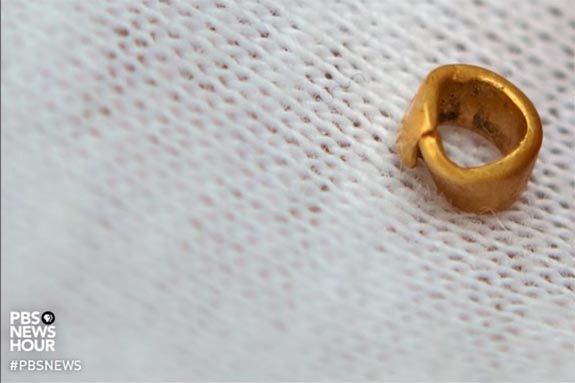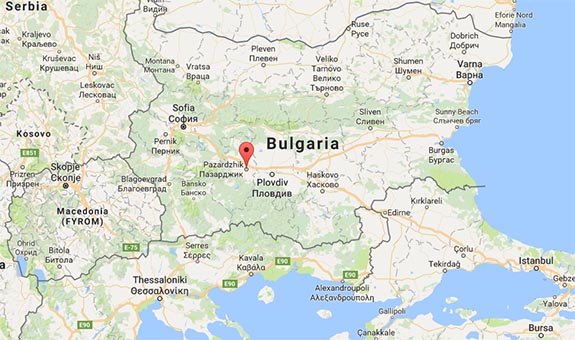It's barely 4mm in width and weighs a scant .005 ounces, but this gold bead from a prehistoric settlement in southern Bulgaria may be the world's oldest gold artifact.

Archaeologists made the discovery at a site just outside the modern town of Pazardzhik. They dated the gold bead to some time between 4,500 to 4,600 BC, making it about 200 years older than the gold artifacts found in Bulgaria's Black Sea city of Varna back in 1972.

The gold found at the Varna Necropolis was previously believed to be the oldest evidence of gold metallurgy. The burial site at Varna is considered one of the key archaeological sites in world prehistory and included a total of 294 graves containing 3,000 gold artifacts.

Despite that massive discovery, the archaeologists at Pazardzhik believe their tiny bead is historic.
"I have no doubt that it is older than the Varna gold," Yavor Boyadzhiev, associate professor at the Bulgarian Academy of Science, told Reuters. "It's a really important discovery. It is a tiny piece of gold but big enough to find its place in history."
The tiny gold bead looks a lot like the tube-shaped, short-cut pasta preschoolers might use to string a Mother's Day necklace.

The bead was found in the remains of a small house. Among the other artifacts found at the site were 150 ceramic birds, an indication that they may have been worshipped by the locals.

Boyadzhiev told Reuters that he believes the bead was fabricated at the site, which was the first "urban" settlement in Europe. He said the townspeople were highly cultured and had migrated there from Anatolia (in today's Turkey) around 6,000 BC. The settlement covered 25 to 30 acres and was protected by a nine-foot-tall fortress wall.
The professor noted that there is evidence that the settlement was destroyed in 4,100 BC by a rival tribe that invaded from the north.
Once the bead is thoroughly studied, it will be handed over to the historical museum in Pazardzhik for public exhibition.
Credits: Screen captures via YouTube.com/PBS News Hour. Varna tomb image by Yelkrokoyade [GFDL, CC-BY-SA-3.0 or CC BY-SA 2.5-2.0-1.0], via Wikimedia Commons. Map by Google Maps.
No comments:
Post a Comment